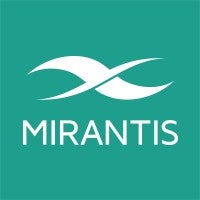In today’s highly competitive technical landscape, testing and development must be performed rapidly yet securely to meet growing consumer demands.
When moving software from one computing environment to another, be it from a physical machine in a data center to a virtual machine (VM) in a cloud environment, a staging environment into production or a developer’s laptop to a test environment, the software must run reliably.
Computing environments may have different versions of software, network topologies, security policies, and storage systems — this could lead to problems when running software on different computing environments. This is where container software comes into the picture.
What is Container Software?
A container is a standard unit of software in which application code is packaged along with its libraries and dependencies so that it can be executed reliably and quickly on any computing environment, be it on desktop, traditional information technology (IT) settings, or the cloud.
Unlike traditional virtualization, where a hypervisor is leveraged to virtualize physical hardware resources, containers virtualize the operation system (OS), typically Linux, so each container contains the application and its libraries and dependencies. The absence of a guest OS (as is the case with a VM) is why containers are fast and portable.
Containers leverage the features of the guest OS to isolate processes and control their access to disk, memory and central processing unit (CPU).
The benefits of containers are:
- Improve utilization
- Support modern development and architecture
- Portable and platform-independent
- Lightweight
What is Containerization?
As an alternative or companion to virtualization, containerization has become an important facet of software development. Containerization involves packaging software code and its libraries and dependencies so that it can run consistently and uniformly on any computing infrastructure.
It allows developers to develop and deploy applications in a faster, more secure manner when compared with traditional methods. In essence, with containerization, applications can be “written once and run anywhere.”
Also read: Containers: Strengthening IoT Infrastructures
What is Container Orchestration?
As the name suggests, container orchestration refers to the automation of lifecycle management, availability, scalability, networking, deployment and provisioning of containers. While it is easy to manually deploy and manage a small number of containers, organizations are increasingly employing a growing number of containerized applications.
Managing a large number of containers, especially as part of a development and operations (DevOps) pipeline or continuous integration/continuous delivery (CI/CD) is impossible without automation. Implementing a container management software is the only logical solution.
Best Container Orchestration Software
Here, in no particular order, are the best container orchestration software platforms currently on the market.
Kubernetes
Kubernetes, also referred to as K8s, is an open source platform for automating management, scaling and deployment of containerized applications. The system groups containers that comprise an application into logical units for simple management and discovery.
With Kubernetes, you can scale consistently without increasing your operations (Ops) team, deliver applications flexibly and consistently and effortlessly move workloads anywhere.
Key Differentiators
- The platform continuously rolls out changes to your application or its configuration, while keeping an eye on application health to ensure that it does not kill all your instances simultaneously. If something does not go according to plan, the platform will rollback the change.
- You do not have to modify your application to use a foreign service discovery mechanism. The platform gives Pods their own internet protocol (IP) addresses and a single domain name system (DNS) name for a group of Pods and can load balance across them.
- With storage orchestration, you can automatically mount the storage system of choice.
- You can deploy and update application configuration and secrets without exposing secrets in stack configuration and rebuilding image.
- The solution does not sacrifice availability while automatically placing containerized applications based on their resource requirements and other limitations.
- The container orchestration tool can manage your CI and batch workloads, replacing failed containers.
- You can easily scale your application up and down automatically based on CPU storage, with a user interface (UI) or a simple command.
- With self-healing, Kubernetes restarts failed containers, reschedules and replaces containers when nodes die and kills containers that do not answer to your user-defined application health check.
- The platform is designed for extensibility.
Amazon Elastic Container Service (Amazon ECS)

Amazon ECS is a fully managed, secure container orchestration solution that helps you scale, manage, and deploy containerized applications. The service thoroughly integrates with the rest of the Amazon Web Services (AWS) platform to provide a straightforward solution for running container workloads in the cloud and on-premises with Amazon ECS Anywhere.
Key Differentiators
- Amazon ECS allows you to use preferred automation and CI/CD tools to swiftly launch containers at scale across AWS’ vast range of compute options.
- The tool leverages AWS Fargate’s serverless technology to deliver autonomous container operations. This significantly reduces the time spent on security, patching, and configuration.
- As Amazon ECS can autonomously handle auto-scaling and provisioning of the resources you pay for and configure, you can significantly reduce compute costs.
- With Amazon ECS Anywhere, you can implement the same Amazon ECS operator tools and console to maintain your on-premises container workloads.
- Amazon ECS offers Docker support and Windows compatibility.
- With AWS Copilot CLI, you can build, release and operate production-ready containers.
- Management features include task definitions, programmatic control, container auto-recovery, new container version updates, blue/green deployments to help reduce downtime during application updates and Amazon Elastic File System (Amazon EFS).
- The platform includes multiple scheduling and task placement strategies, like task scheduling, service scheduling, daemon scheduling, and task placement.
- Networking features include service discovery, service mesh, task networking, and load balancing.
- Amazon ECS provides monitoring and logging capabilities as well.
- The solution meets global security and regulatory requirements. You can assign granular permissions for each container, giving a high level of isolation when building applications.
Mirantis Kubernetes Engine

Mirantis Kubernetes Engine is an enterprise-ready Kubernetes and Swarm orchestration platform. The container orchestration tool can be deployed and run anywhere with Mirantis Container Cloud or on unmanaged infrastructure with Mirantis Launchpad.
Key Differentiators
- You can develop and run modern applications at scale, be it in the cloud or bare metal. The platform provides manageable, resilient, hardened and customizable Kubernetes and Swarm orchestration on demand.
- Mirantis Kubernetes Engine clusters can be deployed or configured to provide Kubernetes with Istio ingress and Calico networking. You can accelerate development with Lens, open source Docker tools and Mirantis plugins.
- Mirantis Kubernetes Engine clusters can also be deployed or configured to provide Swarm orchestration for rapid iteration and simplified operations with open source Docker tools.
- The software can run anywhere, be it in the cloud, on VMs, or bare metal. Worker nodes can run on a variety of Linux OSs or Windows Server.
- Mirantis Kubernetes Engine is secure and equipped with built-in Content Trust and FIPS-140-2 encryption to prevent the execution of unsigned or improperly signed container workloads.
- You can run any mix of Mirantis Kubernetes Engine Linux and Windows worker nodes within the same computing environment.
- You can easily make use of specialized hardware in virtual and bare-metal environments by configuring Mirantis Container Runtime.
- Mirantis Kubernetes Engine clusters can be managed, observed, deployed, and configured centrally and consistently using Mirantis Container Cloud. You can also avail of a single point of integration for operations automation and self-service, built-in observability, zero-downtime updates, and centralized provisioning.
Google Kubernetes Engine

Google Kubernetes Engine (GKE) is a production-ready, managed environment for running containerized applications. With GKE, you can automatically deploy, manage, and scale Kubernetes in a simple manner.
Key Differentiators
- Google is the largest engineering contributor to Kubernetes, an open source container orchestration platform — you can run Kubernetes on GKE.
- You can start promptly with single-click clusters and scale up to thousands of nodes (15,000).
- The platform is secure by default and includes data encryption and vulnerability scanning of container images.
- With four-way autoscaling, you can eliminate operational overhead.
- You can leverage a high-availability control plane, including regional and multi-zonal clusters.
- With support for stateless, serverless and application accelerators, you can develop a variety of applications. Make use of Kubernetes-native CI/CD tooling to enhance application development speed while maintaining security.
- Select the release channel that best suits your business needs, be it stable, regular or rapid.
- Google Site Reliability Engineers (SREs) constantly monitor your cluster and its storage, networking, and computing resources.
- GKE offers two modes of operation: Standard and Autopilot.
- The Standard mode gives you complete control over the nodes with the ability to run custom administrative workloads and fine-tune.
- Autopilot mode is a fully managed, hands-off solution that manages the entire cluster’s infrastructure and ensures you only pay for running Pods.
- With consolidated billing, simplified licensing, featuring portability and pre-built deployment templates, gain access to enterprise-ready containerized solutions.
- GKE Sandbox provides enhanced workload security by acting as a second shield of defense between containerized workloads on GKE.
Red Hat OpenShift Container Platform

Red Hat OpenShift Container Platform is an enterprise-grade, hybrid cloud Kubernetes solution to quickly and surely build, deploy and scale containerized applications. Red Hat is a leading Kubernetes contributor; you can benefit from streamlined, automatic platform installation, and updates.
Key Differentiators
- The platform uses Kubernetes Operators for automatic, push-button upgrades for the container host, Kubernetes cluster and application services running on it (the cluster).
- The solution delivers a solitary, consistent Kubernetes platform anywhere, run by Red Hat Enterprise Linux. You can view and manage all your clusters and implement and enforce policies across multiple teams from a user-friendly console. This provides enhanced visibility across multiple deployments.
- With developer-friendly workflows like Red Hat source-to-image capability and CI/CD pipelines, you can go straight from application code to container.
- The technologies supported by the platform include Knative, Istio, Prometheus, Jenkins, Node.js, Red Hat AMQ Streams, and Virtualization.
- Prometheus is the standard for application and cloud-native cluster monitoring.
- The platform builds security checks into your container stack and is a trusted solution.
- You can use Grafana dashboards for visualization.
- The platform is Kubernetes Certified and ensures compatibility and interoperability between container workloads.
Choosing the Right Container Software
The Kubernetes platform offers production-grade container orchestration. Its features include automated rollouts and rollbacks, service discovery and load balancing, storage orchestration, secret and configuration management, automatic bin packing, batch execution, horizontal scaling, self-healing, and extensibility.
Amazon ECS is a highly secure, reliable and scalable solution to run containers. It allows you to use existing tools, lower compute costs, meet security and regulatory requirements and spend less time on operations.
The platform offers several container development, management, scheduling and task placement, networking and monitoring and logging capabilities. Mirantis Kubernetes Engine is an enterprise-grade Kubernetes and Swarm orchestration software.
With the system, you can ship code faster, run anywhere and securely, run Windows-native container workloads, avail of specialized hardware support and manage clusters centrally and consistently. GKE offers a straightforward, automatic way to deploy, manage and scale Kubernetes.
The container orchestration platform’s key features include two modes of operation, Pod and cluster autoscaling, container-native networking and security and prebuilt Kubernetes applications and templates. With Red Hat OpenShift Container Platform, you can rapidly and steadily build and deliver containerized applications.
The platform is a consistent foundation for cloud and on-premises workloads. Its features include push-button upgrades, built-in monitoring, on-demand environments, ecosystem integration and centralized policy management.
Each of the container software mentioned in this guide are incredible solutions. Carefully evaluate each platform and opt for the one that most accurately meets the needs of your organization.
Read next: The Impact of Container Architecture on IT Development
The post Top Container Software & Orchestration Tools 2021 appeared first on IT Business Edge.














